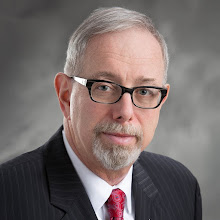
It was an ugly, ugly bedroom. The only solution I could think of was to scrape off the seven layers of paint and wallpaper to get back to the original plaster. At that point we would be able to make the room ready for my daughter. It was the spring of 1983 and I was living in University Heights. The work was backbreaking and monotonous. Success was measured in inches. “Surely there must be a better way of doing this”, was muttered on an hourly basis. I even wondered if it would have been easier to just knock out the walls and hang new Sheetrock. But we persevered because we knew why we were doing this. We were doing this for Jenny.
Is the effort worth it? Are our goals worthy of the time and effort it might take to achieve them? That question pops up again and again when we look at the Patient Protection and Affordable Care Act (PPACA). We were told that there were 50,000,000 uninsured Americans and that the PPACA would solve this problem. We were told that the cost of insurance and the actual cost of healthcare would decrease. We were promised easy access to affordable care.
Are we there yet?
According to the Gallup Pole published in March 2014, the number of uninsured in the United States has decreased. Of course, that number has steadily INCREASED until it peaked in the middle of last year. But now it is going down. Gallup conducted more than 28,000 interviews and has determined that 15.9% of all Americans are uninsured. With a US Population of Approximately 318,000,000, that would mean that about 50,562,000 of us are uninsured. For comparison sake, the uninsured rate was in the 14% range until the crash at the end of 2008 and did not exceed 17% until the middle of 2011.
It might be fair to ask if the new law is really having any impact on the number of uninsureds. Is the economy, slowly recovering, the reason more people are now getting coverage? Or it could be the expansion of Medicaid in those states that chose to fully cover the working poor. It is way too early to tell. The numbers released so far, rounded to the nearest hundred thousand or so, are neither firm nor reliable.
Allow me to provide you with a small but accurate sampling of the individual health insurance market in Greater Cleveland. I wrote 62 contracts (individuals or families) during the first three months of 2014. Here is the breakdown:
On Exchange (Subsidy Eligible) Off Exchange
23 Contracts 39
48 Insured Individuals 66
7 Previously Uninsured 10
15% Newly Insured 15%
Twenty-three individuals or families successfully purchased a policy with me on the new exchange. We only used the exchange because they are going to receive a tax subsidy to help to pay for the policy. There were a total of 48 people involved and only 7 of them, 7 total adults and children, were previously uninsured. The other 41 changed coverages to get cheaper insurance or to pick up maternity.
My Off Exchange experience is essentially the same. Thirty-nine individuals and or families applied for coverage. Of the sixty-six people covered, only 10 had been previously uninsured. The balance purchased policies, in many instances, because we are no longer rating for risk. In other words, these are individuals and families who may have paid a lot more for coverage in the past due to their preexisting conditions. Their conditions and the cost to treat them didn’t disappear, just the money it took to cover the risks.
It is my experience, with my admittedly little sample, that only 15% of my transactions involved covering the uninsured. Most of this is simply shifting risk and cost. People with lower incomes have shifted a large chunk of the cost of insurance to the US taxpayer. Unhealthy people have shifted the risk of their insurance to the general population. The uninsured, the people who would be swamping our offices (sarcasm intended), didn’t stand in line outside of my door.
I talked with an uninsured gentleman this morning. Harry (name changed) lives in Parma. He is 62, uninsured since he left his last job in 2010, and has no interest in spending a dime more than necessary. He has pension, savings, and is getting by. He uses the word Obamacare like expletive. Why did he call my office? It may be because his right knee, the one that was surgically repaired in 2009, may be acting up. It could be because his buddy is in the hospital and he got scared. Who knows? Harry didn’t purchase coverage when we talked in October and he didn’t do anything today. And he won’t do anything this November at the Open Enrollment unless that knee starts to really hurt or that buddy dies.

So please remind me why we did this. Did we need to destroy the village to save it? Was it worth it? If our goal was to cover the uninsured and the working poor, we could have done a better, more thorough job expanding Medicaid. The rest, affordability and patient protection, seem just beyond our reach. But it is only June 2014. It is still too early to tell.
DAVE
www.bcandb.com





No comments:
Post a Comment